If you’re fully immersed in the Apple ecosphere of products, you may not have noticed a big trend that’s happening with computing. No, we’re not talking about AI, though that is the hot trend, it’s something that’s actually tied to AI development: graphics cards.
You might typically associate graphics cards with gaming and other video-focused pursuits, but AI has had a major influence on graphics card sales. The tech involved can handle AI’s large-scale calculations well. Because of that, Nvidia, perhaps the largest player in the graphics card market, has seen its products’ popularity explode.
Apple has had success with its M-series chips for its Macs and iPads. When the M1 debuted, it demonstrated impressive gains over the Intel processors it replaced, and each new M chip continues to show remarkable speed. Apple chips feature an integrated CPU, GPU, and other components, and the integration contributes to Apple silicon performance and power efficiency.
But as the hype around graphics cards continues with the launch of the Nvidia RTX 5070ti, we started wondering, would Apple ever endeavor to make a standalone graphics card? The current M4 chips offer impressive graphics performance, and Apple has meddled with such an endeavor in the past with its proprietary AMD Radeon MPX modules for the Mac Pro.
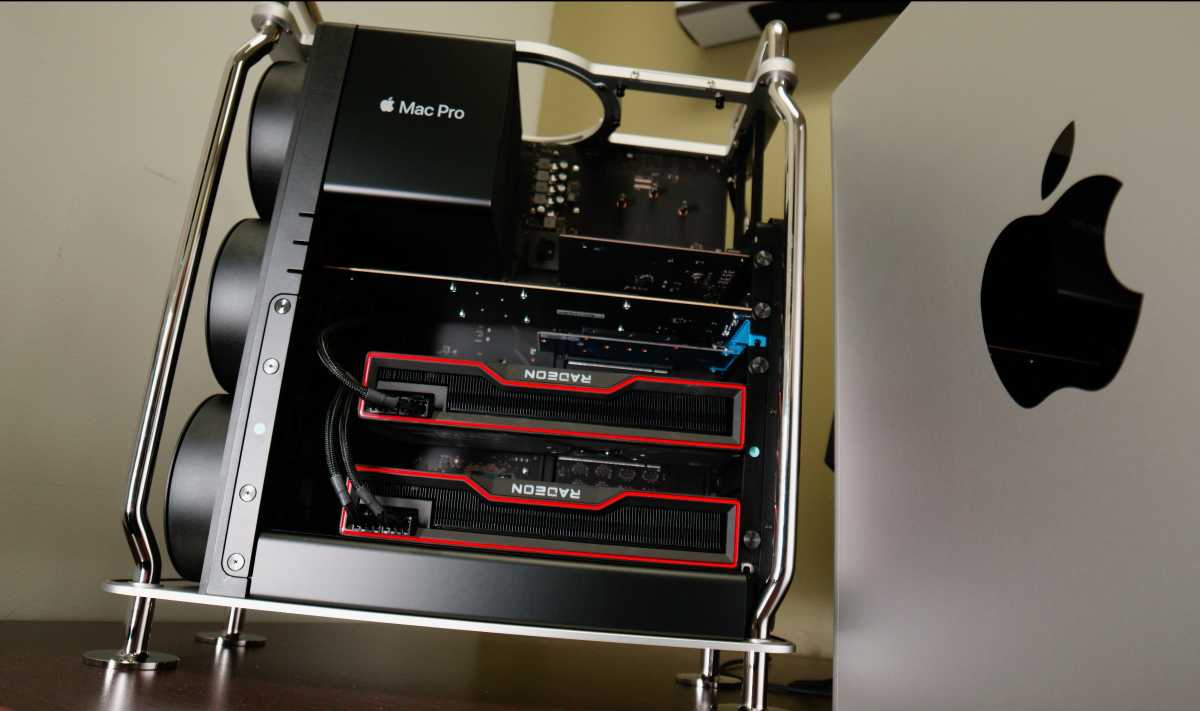
Before Apple silicon, users could install discreet graphics cards into the 2019 Mac Pro.
Thiago Trevisan
The tight integration of hardware, software, and user experience has been a hallmark of Apple’s modus operandi. But a separate Apple graphics card could ease the burden of releasing chip updates for the Mac Pro and Mac Studio–which currently use M2 Ultra chips released in June 2023. There’s also the Asus Thunderbolt 5 eGPU for the PC that made us wonder if Apple would ever do the same or allow such devices back on its Macs.
What the Apple silicon change meant for graphics
Before we ponder the possibilities, let’s look at the recent history of Apple and graphics hardware. The move to Apple silicon did not just cut off one giant chipmaker from Apple products, it also removed AMD and its Radeon GPUs from the equation. Long a staple of Macs, AMD Radeon graphics came in various flavors ranging from integrated graphics in its MacBook to discreet standalone GPUs available for the 2019 Mac Pro.
Apple once used Nvidia graphics in Macs, with an Nvidia graphics card making its Mac debut with the Power Mac G4 in 2001. Apple stopped using Nvidia GPUs in 2013, to the chagrin of many professionals and enthusiasts. Apple also used ATi graphics cards, but eventually, Apple settled on AMD.
Which brings us to Apple silicon. With the M series chips, Apple proved that both a high-performing CPU and GPU can coexist in an integrated chip, along with RAM and storage. The ultimate goal of this change was to create a tremendously powerful and efficient chip. It succeeded.
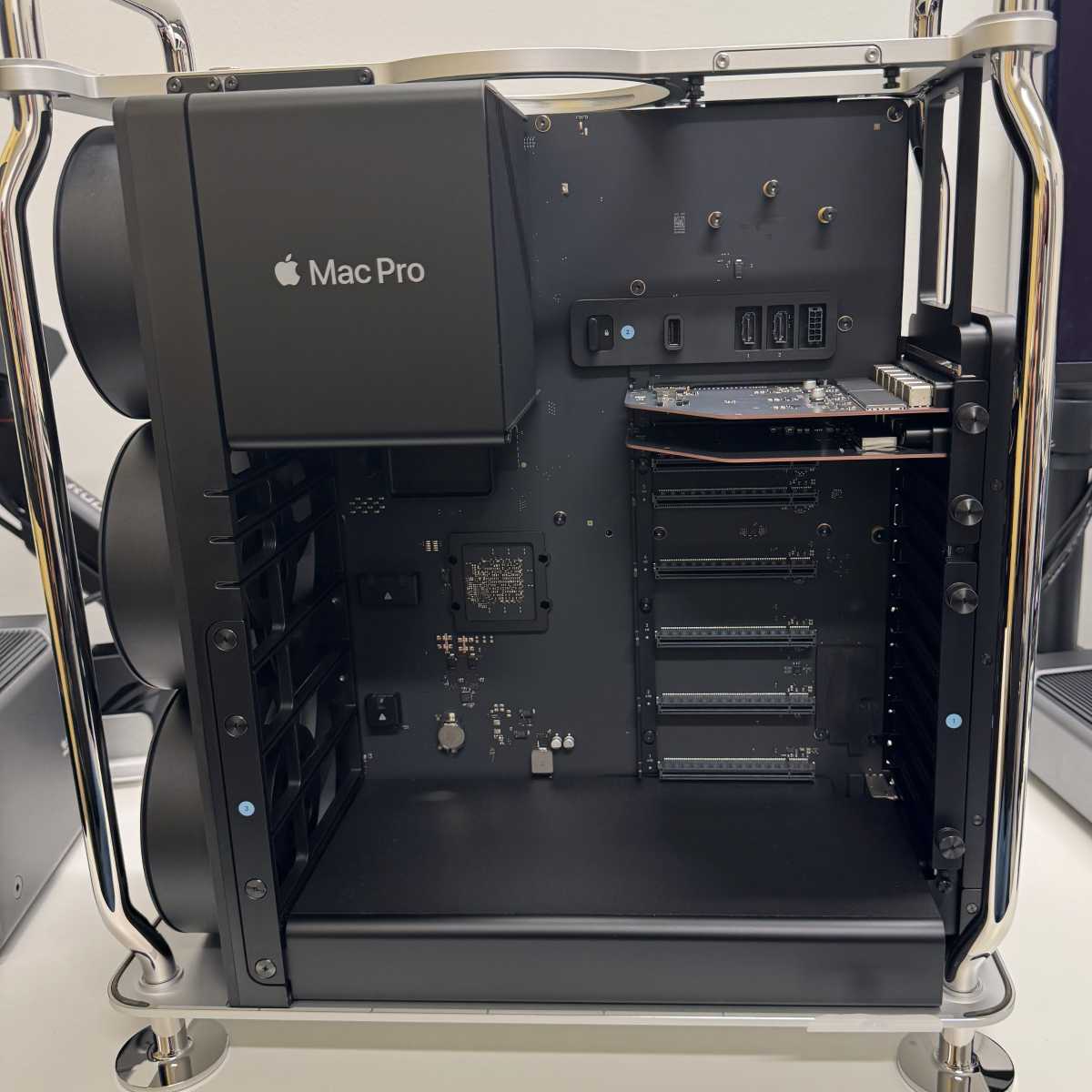
The empty Mac Pro seems like a design afterthought with no graphics card to install.
Thiago Trevisan
The most salient example of the stark infrastructure change is in the 2023 Mac Pro, which has the same chassis as the 2019 Mac Pro and is clearly designed to use standalone GPUs or MPX modules. The M2 Ultra chip, with its 24-core CPU, 60-core GPU, 64GB of unified memory, and 1TB SSD (in the base configuration) is all integrated in one piece of silicon. The graphics performance of the M2 Ultra is enough for many Mac Pro customers while being more efficient than the power-hungry AMD Radeon MPX modules.
Apple also had its Afterburner card, which helped to boost ProRes performance on the 2019 Mac Pro. Eventually, Apple did what it considered ideal: it created an integrated Media Engine within the M chip itself. So now, without these modules, the Mac Pro is a cavernous chassis.
What Mac Pro users are missing out on
The way the Mac Pro with Apple silicon is currently built, it cannot use graphics cards in its PCI Express expansion slots. Apple’s GPU is built into its M-series chip and the company sees no need to create its own separate GPU card and compromise performance and efficiency.
But that also means third-party cards aren’t compatible, either. With the performance Nvidia has on tap for its latest GeForce RTX 50 Series, most serious professionals who rely on graphics have likely abandoned Apple. While the M4 is excellent, it still cannot hold a candle to Nvidia’s offerings in advanced workloads. The M5 generation of Apple silicon is not likely to breach that divide, either. Apple would need some other way to boost graphics performance–if it wants to.
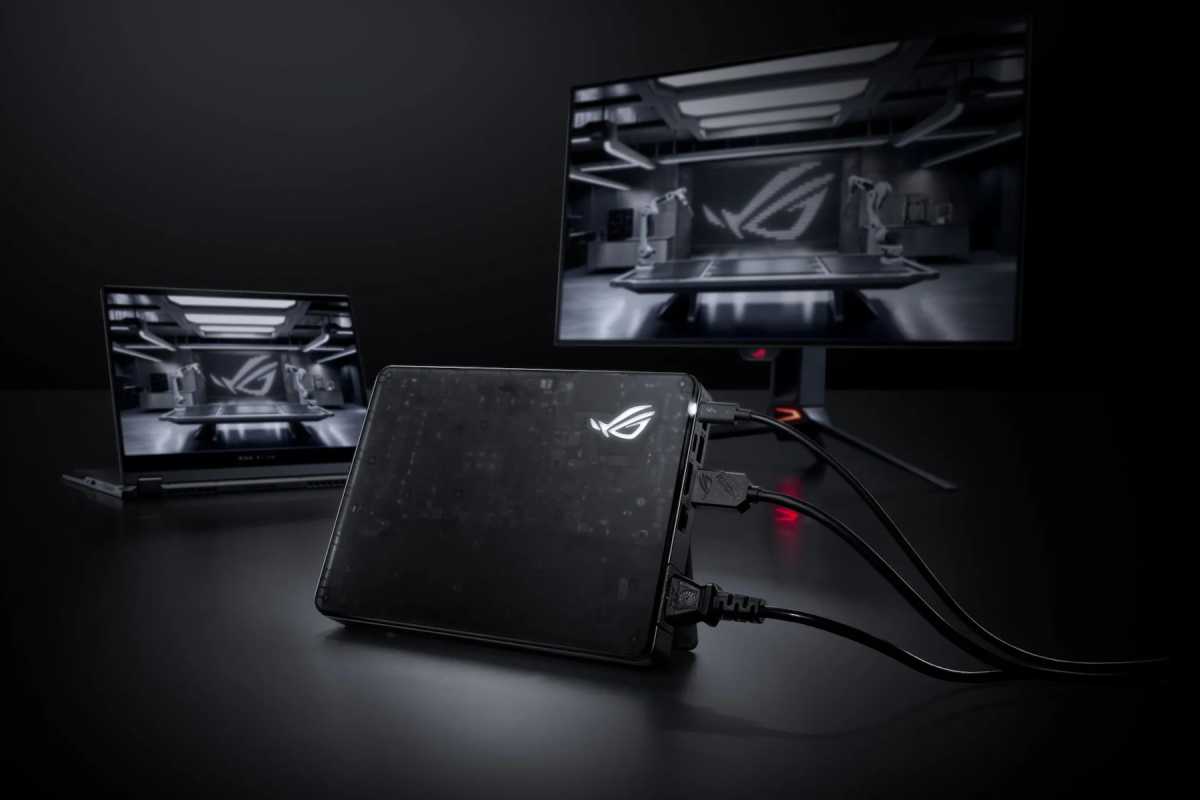
Asus’ new Thunderbolt 5 eGPU looks impressive, but it can’t be used on a Mac.
Asus
Historically, Apple has allowed external GPUs (eGPUs) to function with its Intel Macs. Many users would use an eGPU fitted with an AMD Radeon RX 5700 XT to boost graphics, for example. But eGPU support was dropped with the switch to Apple silicon–so you can stop eyeing that sick-looking Asus ROG XG Mobile Thunderbolt 5 eGPU/Dock.
Is there demand for increased GPU performance on a Mac?
The truth is that there just may not be the demand in the market for Apple to supply more graphics power–yet.
Let’s look at the core Apple consumer that depends on GPU performance and how they differ from the rest of the industry: it’s mostly video editors and production studios. As someone who edits video (often from 6K or 8K Raw formats), the current Apple silicon offerings are more than sufficient, and a more powerful GPU would make only a minor difference. Apple’s terrific encoders and decoders also make easy work of many common formats, so the emphasis here is no longer on raw GPU performance.
How about those who do 3D creation and graphics-heavy workloads? Those users have likely been using Windows or Linux and Nvidia’s Cuda platform, but for those who are on the Mac, more graphics performance certainly would help. It could even bring users back to macOS, users who left because they needed more power but they miss the Mac experience. This may not be a large enough set of users to entice Apple, though.
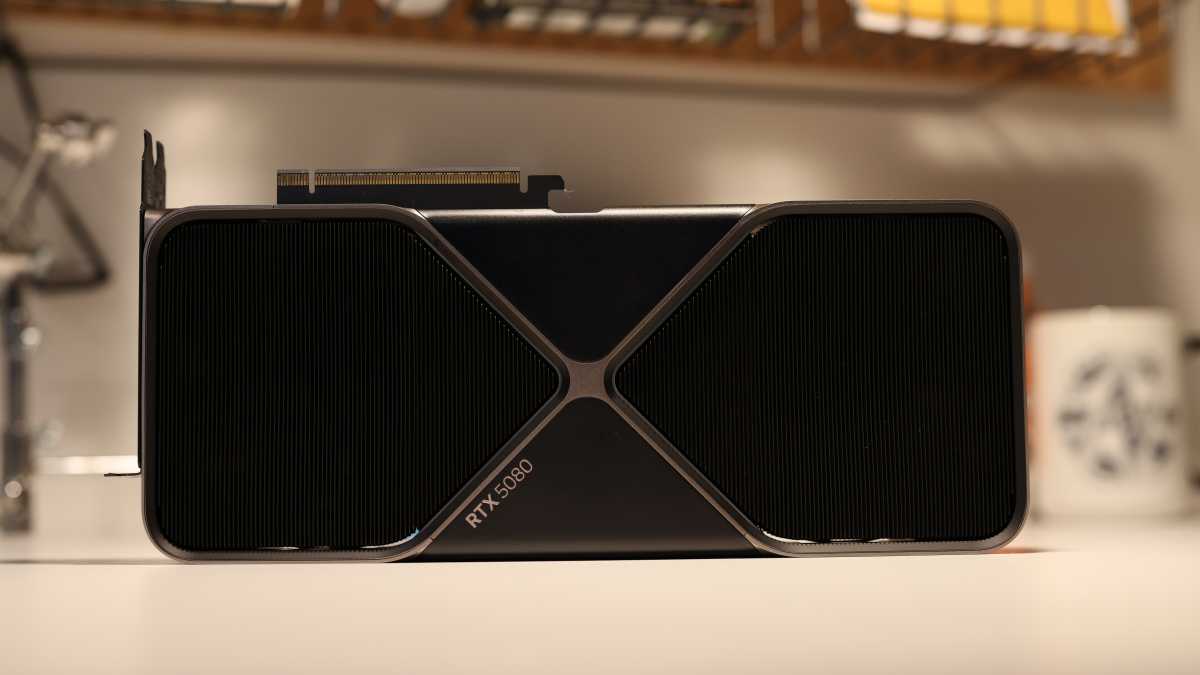
A card like the Nvidia GeForce RTX 5080 would look pretty nice inside the Mac Pro.
Adam Patrick Murray / Foundry
How about one of the biggest growing markets worldwide, gaming? Apple consumers are into gaming, just in a different way than on the PC side. Apple has been making efforts recently to push Apple Arcade, as well as popular games such as Resident Evil 4. With ray tracing and good graphics performance from the iPhone 16 Pro, Apple certainly has the foundation at the ready.
On the PC side, gamers want next-generation GPUs because the newest titles demand ray tracing and higher resolutions. The way this demand is met is by graphics cards that can be upgraded when necessary. I find it unlikely that Apple would abandon its idealized vision of an integrated Apple silicon solution to address this user need.
There’s also a perception problem: Macs just aren’t seen as a gaming platform. Coincidentally, the same perception is being conveyed with the Apple Vision Pro; it’s portrayed as a productivity device first and entertainment second. On the other hand, users of the Meta Quest 3 are enthusiast gamers, increasing its reach. The Vision Pro has the horsepower and resolution for a great gaming experience but it’s missing a big push from Apple and developers. Sound familiar? It’s another instance of how Apple isn’t highly motivated for the gaming market beyond what it has already done, which makes graphics card adoption unlikely.
Even if Apple facilitated developers to want to make more games for the Mac, chances are it would do this within the framework of its Apple silicon graphics performance.
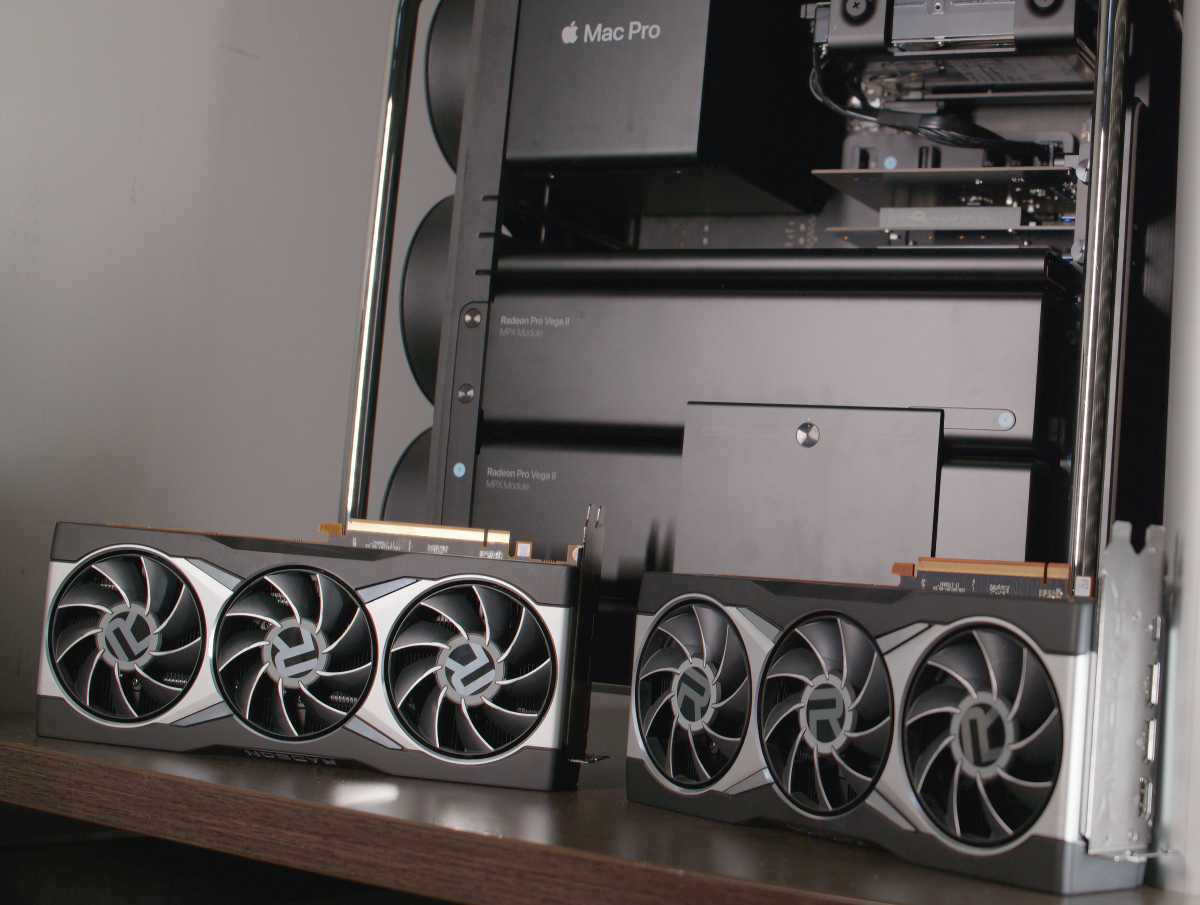
Thiago Trevisan
The future could be bright
It isn’t all bad news for Apple fans who dream of more graphics power. Apple’s silicon Macs have impressed with every new release, so there is a good chance the tortoise may indeed eventually win the race. Or push ahead just enough to have ample performance without needing other solutions, which it arguably has done already for many.
The past can’t be ignored, however. The Afterburner and MPX modules it offered with the Intel Mac Pro show that Apple is willing to address the needs of niche markets. While it will require some engineering ingenuity and new implementations of M-series chips, Apple is capable of it, and it feels as if there is a very remote chance that the company could entertain standalone graphic cards. But the days of eGPUs working with Macs are likely long behind us. The Mac Pro doesn’t face limits concerning power consumption or size–it’s clearly big enough to fit larger Apple silicon inside.
But just because Apple can do it, doesn’t mean it should. As Apple silicon gets so good that everything is neatly packed in a Mac mini-sized graphics powerhouse, do users even want an external graphics card? Probably not. The best bet is for Apple to continue its integrated silicon journey as intended. But we can always dream.





